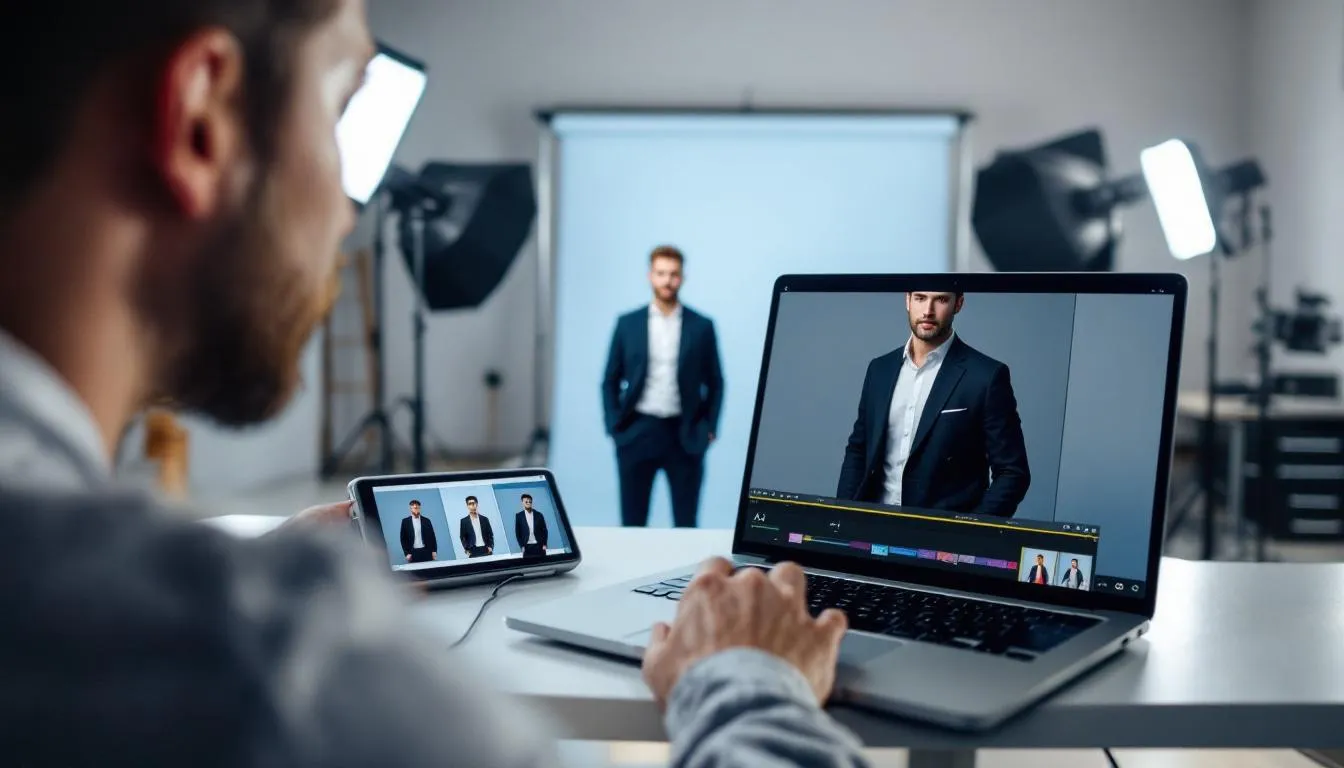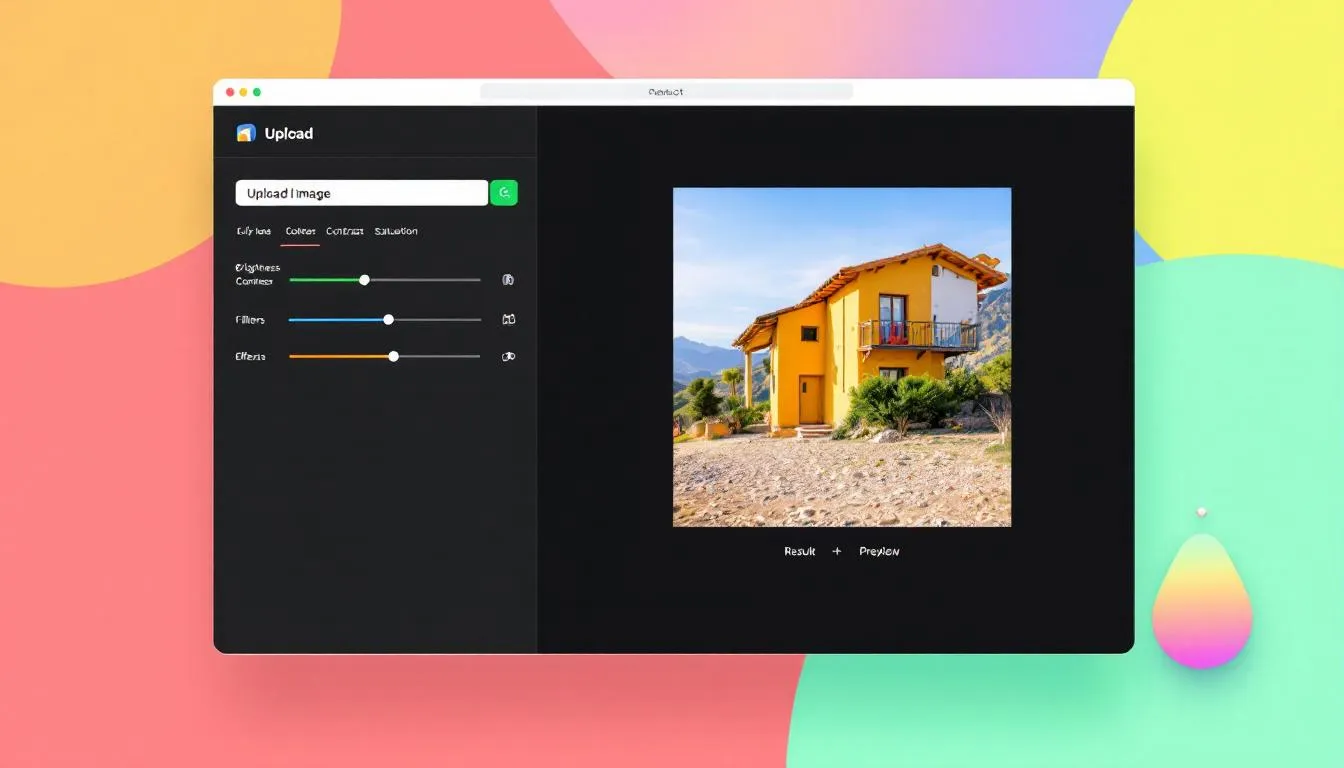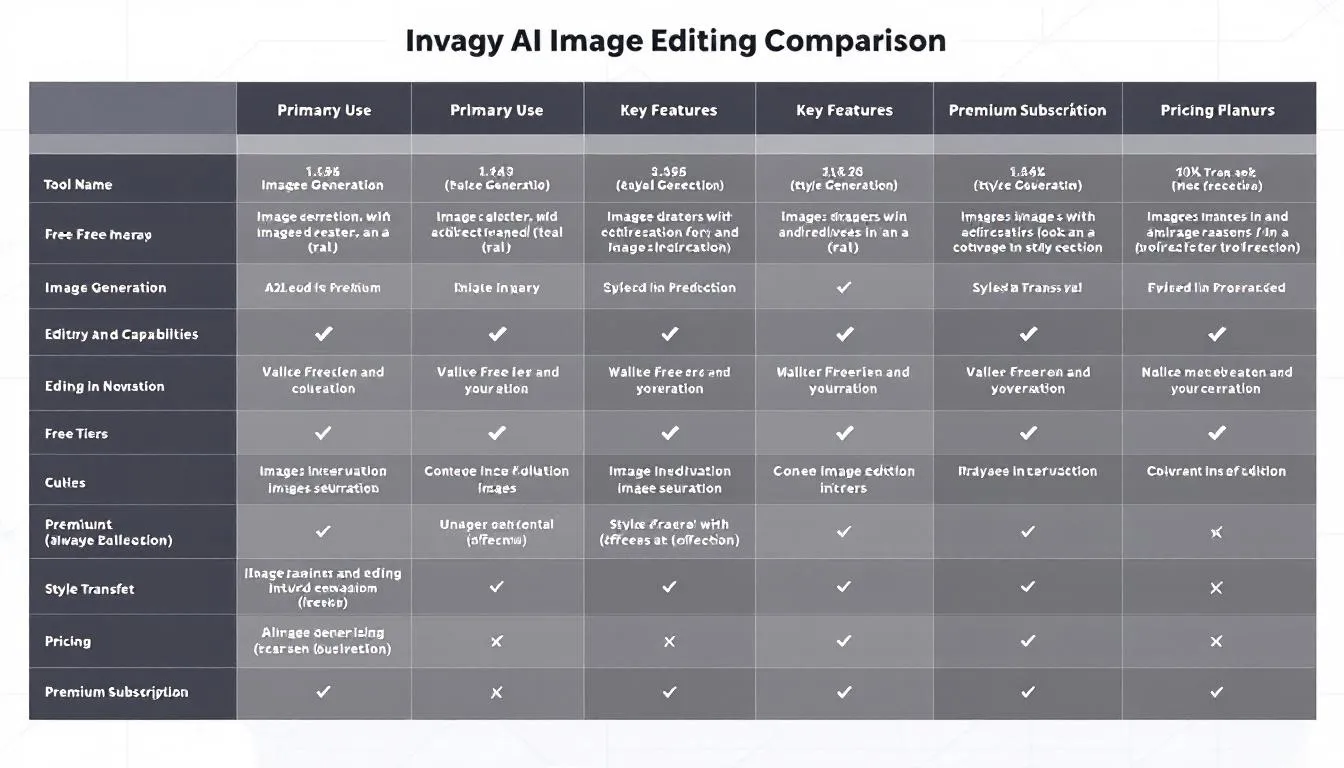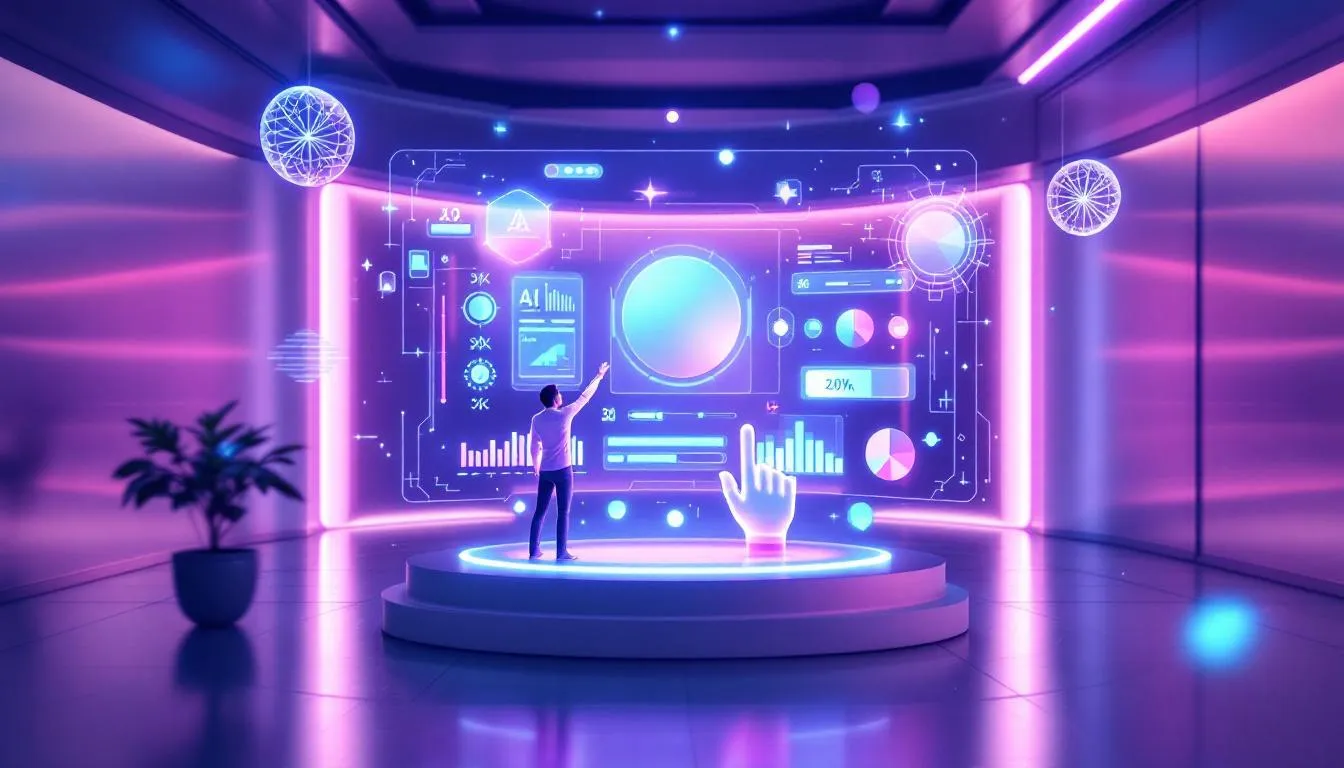
AI Image Editor: Transform Your Photos with Artificial Intelligence in 2025

The photo editing landscape has been revolutionized by artificial intelligence, making professional-quality image enhancement accessible to everyone. In 2024, you can transform images from ordinary snapshots into stunning visuals using just a few clicks, eliminating the need for complex software or years of design skills.
An ai image editor leverages machine learning algorithms to analyze, understand, and enhance your photos automatically. Unlike traditional photo editing software that requires manual adjustments and technical knowledge, these ai tools can intelligently detect objects, faces, backgrounds, and artistic elements to apply sophisticated edits instantly.
Whether you’re a content creator seeking quick touch ups for social media content, a business owner enhancing product photos, or someone working on personal projects, ai image editing has become a game changer for anyone who needs professional looking results without the learning curve of complex programs.
What is an AI Image Editor?
An ai image editor represents a fundamental shift from traditional photo editing software toward intelligent, automated image processing. While conventional photo editors require you to manually select tools, adjust settings, and apply effects through complex menus, an ai photo editor uses artificial intelligence to understand your images and execute sophisticated edits with minimal input.

The technology behind these innovative editing tools relies on deep learning neural networks trained on millions of images. These ai tools can recognize faces, objects, backgrounds, and artistic styles, enabling them to make intelligent decisions about how to enhance photos. For instance, when you upload image files, the artificial intelligence can automatically identify areas that need improvement and suggest or apply corrections accordingly.
Key capabilities that distinguish ai image editors from traditional software include:
-
Object Recognition and Removal: The ai can identify specific elements in your photos and remove or replace them seamlessly
-
Background Processing: Automatically remove backgrounds or change backgrounds without manual masking
-
Style Transfer: Apply artistic filters and effects that intelligently adapt to your image content
-
Content-Aware Enhancement: Adjust colors, lighting, and composition based on the ai’s understanding of optimal image qualities
The benefits extend to both beginners and professional photographers. Newcomers can achieve high quality results immediately without learning complex tools, while professionals can save time on routine edits and focus their expertise on creative decisions. This simple online tool approach has democratized access to advanced image editing capabilities.
Top AI Image Editing Features You Need to Know
Modern ai image editors offer an impressive range of features that automate previously time-consuming tasks. These capabilities represent the cutting edge of artificial intelligence applied to visual content creation.
Text-to-Image Generation allows you to create artwork and visual content from written descriptions. Simply type a text prompt describing what you want, and the ai image generator creates original visuals based on your specifications. This feature is particularly valuable for creating unique backgrounds, conceptual images, or when you need specific visual elements that don’t exist in your current photo library.
Generative Fill seamlessly adds or removes objects from your images. Whether you need to eliminate unwanted elements or add new ones, this feature analyzes the surrounding context to generate content that matches the existing style, lighting, and perspective. The technology ensures visual continuity across the edited image.
AI Background Removal and Replacement processes your uploaded images to automatically detect and separate subjects from backgrounds. The background remover function works in seconds, and you can either remove backgrounds entirely for transparent images or replace them with new scenes. This eliminates the tedious manual selection process required in traditional photo editing software.
Smart Upscaling enhances image resolution up to 4K while maintaining image quality. The ai analyzes pixel patterns and intelligently interpolates new detail, making it possible to enlarge photos without the blurriness typically associated with resolution increases.
Automatic Color Correction and Lighting Adjustments analyze your images to optimize exposure, contrast, and color balance. The artificial intelligence recognizes scenes and applies appropriate corrections, whether you’re working with portraits, landscapes, or product photography.
Advanced AI Editing Capabilities
Beyond basic enhancements, sophisticated ai image editors offer professional-grade features that deliver natural results.
Face Enhancement and Portrait Retouching specifically targets human subjects to enhance portraits while maintaining authentic appearance. The technology can smooth skin, brighten eyes, and adjust facial features subtly, avoiding the over-processed look common with manual retouching.
Object Detection and Smart Selection Tools automatically identify and isolate specific elements within your images. This intelligent recognition enables targeted adjustments without affecting other areas, providing complete control over your edits.
Sky Replacement recognizes sky areas in landscape photos and can replace them with more dramatic or appropriate alternatives. The ai ensures proper blending with foreground elements and adjusts lighting to maintain realistic results.
Noise Reduction and Sharpening Algorithms analyze image quality issues and apply appropriate corrections. These features are particularly useful for improving photos taken in low light conditions or when working with compressed images from mobile devices.
How to Use AI Image Editors: Step-by-Step Guide
Getting started with ai image editing is straightforward, requiring no prior experience with complex tools. Most platforms follow a similar workflow that emphasizes simplicity and immediate results.

Step 1: Upload Your Image Start editing immediately by uploading your photo. Most ai image editors support common file formats including JPEG, PNG, and WEBP, with file size limits typically up to 20MB. Simply drag and drop your image or click to browse your files. The intuitive interface makes this process accessible on both desktop computers and mobile devices.
Step 2: Choose Your AI Editing Model Select the appropriate ai model based on your specific needs. Different models excel at various tasks - some focus on portrait enhancement, others on landscape photography, and specialized options handle product photos or artistic transformations. Many editors automatically suggest the best model based on your uploaded images.
Step 3: Describe Your Changes Using Text Prompts Use natural language to describe your desired modifications. Instead of navigating complex menus, simply type what you want: “make the sky more dramatic,” “remove the person in the background,” or “enhance the colors.” The ai interprets your one prompt and applies appropriate modifications.
Step 4: Review Generated Variations Most ai editors generate multiple variations of your edited image, allowing you to choose your preferred result. You can often generate multiple variations with slight differences, giving you options to find the perfect enhancement for your needs.
Step 5: Download High-Quality Results Once satisfied with your selection, download your edited image in high resolution. Many platforms offer various export options and maintain image quality throughout the editing process.
Pro Tips for Better Results:
-
Use clear, specific descriptions in your text prompts rather than vague terms
-
Start with high-quality source images when possible
-
Experiment with different prompt variations to explore creative possibilities
-
Take advantage of batch processing features when editing multiple images with similar requirements
Best AI Image Editors in 2025
The market offers numerous ai image editing solutions, each with unique strengths suited to different use cases and skill levels. Here’s a comprehensive comparison of leading platforms:
Adobe Photoshop with AI Integration (Firefly) represents the gold standard for professional image editing enhanced with artificial intelligence. The integration of generative fill, neural filters, and smart selection tools maintains Photoshop’s position as the preferred choice for graphic designers and professional photographers. However, the subscription cost and learning curve may deter casual users.
AI Video Maker’s AI Image Editor (https://aivideomaker.ai/ai-image-editor) offers a powerful and user-friendly online platform that combines smart edits and multiple edits capabilities. It supports various file formats and provides intuitive controls to transform images with stunning results, making it a great choice for both beginners and professionals looking for high quality edits and complex edits made simple.
Canva’s Magic Edit focuses on social media content creation with ai-enhanced capabilities. This platform excels at creating designs optimized for various social media platforms while incorporating intelligent editing features. The strength lies in its template library combined with ai enhancement tools.
Remove.bg specializes in background removal with exceptional accuracy. This dedicated tool processes images quickly and handles complex edges like hair and fur better than many general-purpose editors. It’s particularly valuable for e-commerce and product photography.
Luminar Neo targets photography enthusiasts with advanced ai enhancement specifically designed for photographers. Features like sky replacement, portrait enhancement, and landscape optimization make it popular among serious hobbyists and professionals.
Pixlr stands out as a free ai image editor with over 15 years of development experience. This online tool offers both basic and advanced features, making it suitable for quick edits and more complex projects. The platform includes ai-powered background removal, object selection, and various enhancement filters. Pixlr’s strength lies in its balance of accessibility and functionality.

Free vs Paid AI Image Editors
Understanding the differences between free and paid options helps you choose the right solution for your needs.
Free Options include basic Pixlr features, GIMP with ai plugins, and limited Canva functionality. These great tools provide essential editing capabilities sufficient for personal projects and basic content creation. However, free versions typically include watermarks, lower resolution limits, and restricted commercial usage rights.
Paid Benefits justify subscription costs through higher resolution processing, commercial usage rights, priority processing speeds, and access to premium features. Most paid platforms process batch images more efficiently and offer customer support.
Subscription Models generally range from $9.99 to $29.99 per month, with annual plans offering discounts. Many services provide free trials allowing you to test features before committing.
Enterprise Solutions cater to teams and businesses requiring consistent branding, bulk processing capabilities, and integration with existing workflows. These typically include collaboration features and administrative controls.
| Editor | Free Features | Paid Price | Best For |
|---|---|---|---|
| Pixlr | Basic edits, watermarks | $4.90/month | Beginners, quick edits |
| Adobe Photoshop | Limited trial | $22.99/month | Professional use |
| Canva | Templates, basic AI | $12.99/month | Social media content |
| Remove.bg | 1 free image | $9.99/month | Background removal |
| Luminar Neo | Trial only | $79/year | Photography enthusiasts |
AI Image Editing for Different Use Cases
The versatility of ai image editors makes them valuable across numerous applications, each benefiting from specific features and capabilities.
Social Media Content Creation leverages ai tools to maintain consistent branding and optimize images for different platforms. Content creators can quickly adjust colors, crop for various aspect ratios, and enhance photos to stand out in crowded social feeds. The ability to edit multiple images with consistent style saves significant time when managing regular posting schedules.
E-commerce Product Photography benefits tremendously from automated background removal and consistent lighting correction. Online retailers can process thousands of product images efficiently, ensuring uniform presentation across their catalogs. Features like shadow generation and color correction help create professional product photos that drive conversions.
Real Estate Photography utilizes sky replacement, lighting enhancement, and perspective correction to make properties more appealing. Virtual staging capabilities allow agents to show furnished spaces from empty rooms, while automatic corrections can improve photos taken in challenging lighting conditions.
Portrait Photography and Headshot Retouching applies sophisticated facial enhancement while maintaining natural appearance. Professional photographers can offer quick turnarounds for headshot sessions, while individuals can enhance personal photos for professional use.
Digital Art Creation and Concept Design employs text-to-image generation and style transfer to create original artwork. Artists and designers use these tools for concept development, mood boards, and creating unique visual elements for larger projects.
Marketing Materials and Advertisement Graphics combines multiple ai features to create compelling promotional content. Marketers can generate background variations, enhance product shots, and create cohesive visual campaigns efficiently.
Benefits of Using AI for Image Editing
The advantages of adopting ai image editing extend beyond simple convenience, offering tangible improvements in workflow efficiency and output quality.

Time Savings represent perhaps the most significant benefit. Complex edits that previously required hours can now be completed in seconds. Professional photographers report reducing post-processing time by 70-80% for routine corrections, allowing them to focus on creative aspects rather than technical adjustments.
Cost Effectiveness emerges from reduced dependency on expensive software licenses and extensive training. A simple online tool can replace costly professional software suites, while the reduced learning curve means less time investment in skill development. Businesses save on hiring specialized photo editors for routine tasks.
Consistency ensures uniform quality across multiple images, crucial for brand management and professional presentation. When you edit multiple images using ai tools, the results maintain consistent style and quality standards that would be difficult to achieve manually, especially when different team members handle various projects.
Accessibility democratizes professional-quality editing capabilities. Users without design skills or technical knowledge can achieve results previously requiring years of training. The intuitive interface makes sophisticated editing accessible to anyone who needs to enhance photos for personal or professional use.
Scalability enables processing hundreds or thousands of images efficiently. Batch processing capabilities allow businesses to update entire product catalogs, photographers to process event collections, and content creators to prepare multiple social media posts simultaneously.
Professional Results emerge from ai algorithms trained on millions of high-quality images. The artificial intelligence understands optimal composition, lighting, and color balance, often producing superior results compared to manual editing by inexperienced users.
Common AI Image Editing Mistakes to Avoid
While ai image editors simplify the editing process, understanding common pitfalls helps ensure optimal results and professional outcomes.
Using Low-Resolution Source Images severely limits the quality of your final results. Even the most advanced ai cannot create detail that doesn’t exist in the original image. Start with the highest quality source material available, and consider the intended use when determining acceptable resolution levels.
Over-Editing and Creating Unnatural Results occurs when applying multiple ai enhancements without restraint. The ease of ai editing can lead to excessive adjustments that produce artificial-looking photos. Maintain subtlety and regularly compare your edited image to the original to ensure natural appearance.
Ignoring Copyright and Licensing when using ai-generated content creates legal risks. Understand the terms of service for your chosen ai image editor, especially regarding commercial use of generated elements. Some platforms retain rights to created content or restrict commercial applications.
Not Backing Up Original Images before applying ai edits eliminates your ability to start over or try different approaches. Always maintain copies of your original files, as some ai editing processes are irreversible.
Relying Solely on AI Without Understanding Basic Principles limits your ability to guide the technology effectively. Learning fundamental concepts of composition, lighting, and color theory helps you communicate better with ai tools and recognize when results need adjustment.
Future of AI Image Editing Technology
The rapid evolution of artificial intelligence promises exciting developments in image editing capabilities over the coming years.
Real-Time Video Editing represents the next frontier, with ai algorithms becoming powerful enough to apply complex edits to video streams in real-time. This technology will enable live content creators to enhance their streams dynamically and video editors to see results immediately rather than waiting for rendering.
3D Image Generation and AR Integration will allow users to create three-dimensional content from two-dimensional inputs and integrate edited images seamlessly into augmented reality environments. This convergence will benefit industries from entertainment to retail visualization.
Mobile Device Integration continues advancing, with smartphones incorporating dedicated ai processing chips optimized for image editing. Future mobile devices will offer desktop-quality editing capabilities, making professional editing truly portable.
Processing Speed and Quality Improvements are expected to deliver near-instantaneous results for even the most complex edits by 2025. Enhanced algorithms will understand context better and produce more nuanced results that require minimal human oversight.

Ethical Considerations around deepfakes and image manipulation will drive development of detection and disclosure technologies. The industry is working toward standards that balance creative freedom with transparency about ai-modified content.
Impact on Photography and Design Industries will likely shift professional focus from technical execution toward creative direction and client communication. As ai handles routine tasks, human expertise will concentrate on artistic vision and strategic decision-making.
Getting Started with AI Image Editing Today
Beginning your journey with ai image editing requires no special preparation or significant investment, making it accessible for immediate experimentation and gradual skill development.
Recommended First Steps for Beginners start with exploring free ai image editor options like Pixlr or basic Canva features. These platforms provide essential functionality without financial commitment, allowing you to understand ai editing capabilities before investing in premium tools. Upload a few personal photos and experiment with different features to discover which capabilities align with your needs.
System Requirements and Browser Compatibility are minimal for most online tools. Any modern web browser with reasonable internet connection speed can access cloud-based ai editors. Mobile devices work well for basic editing, though desktop computers provide better experiences for detailed work and batch processing.
Building Skills Through Online Resources accelerates your learning curve. Many platforms offer built-in tutorials, while YouTube channels and community forums provide extensive guidance. The creative process benefits from observing how other users approach various editing challenges.
Choosing the Right AI Editor depends on your specific requirements. Consider whether you need commercial licensing, the types of images you’ll edit most frequently, and your budget constraints. Start editing with free tools to identify which features matter most for your use cases.
Free Trial Options and Money-Back Guarantees allow risk-free exploration of premium features. Most paid platforms offer trial periods ranging from 7 to 30 days, providing sufficient time to evaluate whether the investment justifies the enhanced capabilities.
The transformation of image editing through artificial intelligence has made professional-quality photo enhancement accessible to everyone. Whether you’re creating social media content, enhancing product photos for your business, or working on personal projects, ai image editors provide the tools to achieve stunning results without requiring years of training or expensive software.
The technology continues evolving rapidly, with new features and improved capabilities appearing regularly. By starting with free tools and gradually exploring advanced features as your needs develop, you can harness the power of artificial intelligence to transform your visual content and streamline your creative workflow.